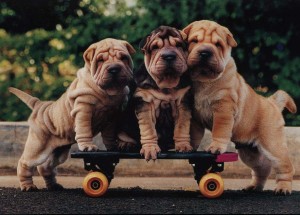Many urban areas are experiencing a new and profound concern with the increasing amounts of dog waste in the city streets. With the huge concentration of dogs in metropolitan areas, whether as household pets or guard dogs, the city is experiencing an alarming increase in pet waste piling up around the already run-down urban landscape.
Concern over environmental pollution in general is also on the rise. Many citizens and some media reporters have made a huge deal over dog waste removal, claiming that every disease from the common cold to bubonic plague comes directly from dog poop. Some people have gone overboard by attempting to aggressively persuade parents with slogans like, “children before dogs”.
Speaking from an unbiased standpoint, dog poop presents very few problems of medical concern to the average person residing in large city areas. The most serious health hazard is, of course, to other dogs and not to humans. Diseases such as hepatitis and distemper are passed from infected dogs to healthy ones through saliva and urine, while internal parasites are transmitted through the poop of infected dogs.
However, for a human to contract any disease from dog poop would require that they walk through the streets barefooted or actually eating dog poop or fleas which is, of course, not very likely. The argument of the “children before dogs” group is that children will unwittingly eat dog fleas and poop. Alright, most parents are not letting their young children, toddlers or infants play unattended on public streets, parks or any place there is a large build up of dog poop; and when they are old enough to play unattended, they have been taught the basics of cleanliness and hygiene. Realistically, very few kids will enjoy the smell of dog poop.
More likely to be of significant danger to human health is contamination of food by roaches, rats, and the common housefly, none of which seems to be exciting enough for these same people who are so concerned with dog poop.
Regardless of who’s judging who, most people agree that dog poop does present an embarrassing stench and unsightly pollution of our environment in an area that can’t handle it. Every dog owner is responsible for the mess created by their dog. Whether it’s a Bull Mastiff or a Shih Tzu, each dog does their share in contaminating grassy areas and disrespecting pedestrians.
It is puzzling that dog owners who are fortunate enough to have a backyard have no difficulty keeping it clean of dog waste; but these same owners will walk their dog out the front door and allow their animals to pollute the public streets, which is basically everyone’s’ front yard.
Animal lovers have a sensitivity to nature and animals that is not known to people who have never loved a pet. The love and sensitivity must go beyond our pets and spread to our human neighbors. We cannot ignore the rights and privileges of other people. Our dogs are our responsibility and we have no right to inflict them on others.
If we all clean up after our pets, we will be contributing to a substantially cleaner, more pleasant environment. It is up to pet owners to preserve the delicate balance between animals and humans.
At Clean Feet, we understand that you live a busy life with family, work and activities. Most Americans live on limited time and because of that we have created a pet waste management team. The main goal of our team is the lend a hand in the collection and disposal of dog and cat poop. The end result is a better environment for humans and animals that leads to an easier life. To start having an easier life our contact info is below.
WE MAKE YOUR LIFE EASIER!
Clean Feet Pet Clean Up
#CleanFeetPetCleanUp




